Sexual harassment is a pervasive issue in the workplace, affecting individuals across various industries and positions. It is essential for both employers and employees to understand the different forms of sexual harassment and their impact. By recognizing and addressing these issues, we can create a safer and more inclusive work environment.
Sexual harassment can take many forms, from inappropriate comments and jokes to unwanted physical contact. It is important for employers to create clear policies that outline what constitutes sexual harassment and the consequences of violating those policies. It's also important for employees to understand sexual harassment and be able to identify it when it occurs.
Additionally, having an open dialogue between employers and employees about these issues helps create a more understanding environment where everyone feels comfortable speaking up when they experience or witness something unacceptable.
The Various Forms of Sexual Harassment
Generally, sexual harassment in the workplace presents itself within three categories: physical, verbal, and nonverbal. No employee should have to endure sexual harassment under any circumstances, and all forms of sexual harassment are equally unacceptable in the workplace.
Physical Sexual Harassment
Physical sexual harassment might be what people think of most when they consider sexual harassment in the workplace. Physical sexual harassment is any unwelcome physical contact of a sexual nature that occurs in the workplace.
Some common examples of this type of sexual harassment include the following:
- Inappropriate and/or unwelcomed touching
- Groping one’s body
- Kissing
- Hugging
- Blocking someone’s path or cornering them
- Intentionally brushing against someone’s body
Nobody deserves to be treated with disrespect or have their body violated. It's important to remember that you have the right to stand up for yourself and report any inappropriate behavior.
Verbal Sexual Harassment
Verbal sexual harassment in the workplace is any unwanted or unwelcome behavior directed at an individual based on their gender that creates a hostile work environment. This can include comments, jokes, or slurs about a person's sex, physical attributes, or clothing style.
Here are some examples of verbal sexual harassment:
- Making inappropriate, sexualized comments or jokes
- Spreading rumors about a person's sex life or orientation
- Making offensive comments related to gender stereotypes
- Asking intrusive and personal questions about someone's sex life or physical attributes
- Making offensive remarks based on someone's identity or gender expression
- Engaging in any other type of behavior that creates an intimidating, hostile, or offensive work environment for the person being harassed
The consequences of verbal sexual harassment can be just as damaging as any other form of harassment. It can lead to an uncomfortable work environment, feelings of anxiety or fear, and a decrease in job satisfaction. In extreme cases, it can even lead to depression and a lack of confidence.
Employees who are victims of verbal sexual harassment have the right to report it and should not feel ashamed or embarrassed about doing so. It's important for employers to take all complaints seriously and make sure that everyone in the workplace feels safe and respected.
Nonverbal & Other Forms of Sexual Harassment
Nonverbal sexual harassment can encompass a wide variety of behaviors that fall neither into the physical nor verbal category. For example, suggestive gestures or the display of sexually offensive content in one’s workplace may be considered nonverbal sexual harassment.
Sexual harassment can also exist on an institutional level, particularly when a company’s policies and procedures are worded or structured such that they foster a hostile work environment.
Contact Us for Legal Assistance
When it comes to looking for legal help with sexual harassment in the workplace, Weiler Law PLLC is here to help. Our team of attorneys understands the complexities involved in these cases and is dedicated to providing the best possible representation. We can work closely with you throughout the process to ensure that your rights are protected.
Contact us online today to request a consultation.

